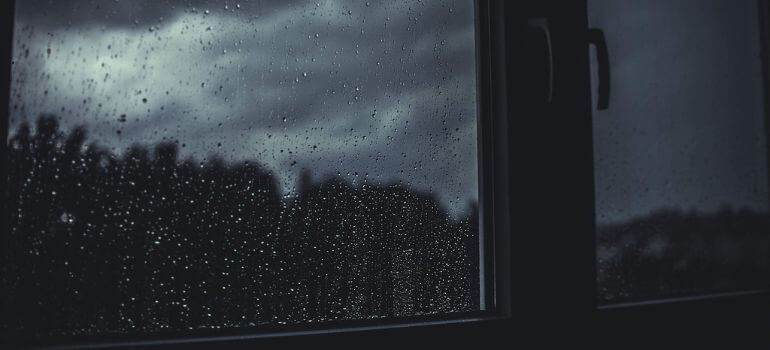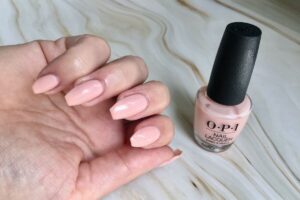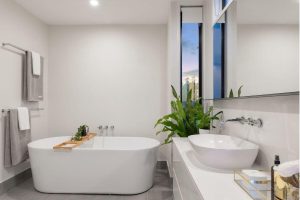Glass is not just a transparent barrier; it’s an integral part of architecture that adds character and style to spaces. When it comes to selecting the right glass for your windows or doors, two popular choices often stand out: Flemish glass and rain glass. In this comprehensive guide, we’ll explore the nuances of these glass types, comparing their characteristics, aesthetics, applications, and more, to help you make an informed decision for your living or working space.
Introduction
Definition of Flemish Glass
Flemish glass, known for its textured surface and timeless appeal, has been a favorite in architectural circles for decades. It adds a touch of sophistication and elegance to any space, making it a go-to choice for those who appreciate traditional aesthetics.
Definition of Rain Glass
On the other hand, rain glass boasts a distinctive pattern that mimics raindrops cascading down the surface. It not only offers a unique visual appeal but also serves practical purposes, making it a versatile option for various applications.
Importance of Choosing the Right Glass Type
Selecting the appropriate glass type goes beyond mere aesthetics; it affects privacy, maintenance, and even energy efficiency. Understanding the characteristics of Flemish glass and rain glass is crucial to making a decision that aligns with your preferences and practical needs.
Characteristics of Flemish Glass
Texture and Appearance
Flemish glass is characterized by its subtle wavy texture, creating a sense of depth and visual interest. The play of light on its surface adds a warm and inviting ambiance to any room, making it a preferred choice for both residential and commercial spaces.
Privacy Features
One of the notable features of Flemish glass is its ability to provide privacy without compromising on natural light. The textured surface diffuses light, preventing a clear view from the outside, making it an ideal option for bedrooms, bathrooms, or office partitions.
Decorative Applications
Beyond its functional aspects, Flemish glass is often used as a decorative element. Its timeless appeal makes it suitable for various design styles, from classic to contemporary, allowing for versatile applications in doors, windows, and even interior partitions.
Characteristics of Rain Glass

Distinctive Rain-Like Pattern
Rain glass gets its name from the unique pattern that resembles raindrops hitting a surface. This distinctive design adds a touch of whimsy to any space, making it a favorite for those who seek a more playful and contemporary look.
Light Diffusion Properties
Similar to Flemish glass, rain glass diffuses light in a captivating way. The scattered pattern creates interesting shadows and reflections, adding depth and character to the surrounding environment. It strikes a balance between privacy and illumination, making it suitable for various settings.
Privacy Aspects
Privacy is a key consideration in choosing glass for doors or windows. Rain glass offers a level of seclusion, making it suitable for areas where you want a bit more discretion without completely sacrificing natural light. Its unique design blurs the view from the outside while maintaining a bright interior.
Comparing Aesthetics
Visual Appeal of Flemish Glass
Flemish glass exudes a classic charm that appeals to those who appreciate traditional and timeless design. Its textured surface adds a layer of sophistication to any space, making it a popular choice for heritage homes, offices, and establishments that value a touch of vintage elegance.
Unique Charm of Rain Glass
In contrast, rain glass brings a contemporary and dynamic element to the table. The playful raindrop pattern adds a modern touch, making it suitable for spaces with a more eclectic or minimalist design. It’s a choice for those who want to experiment with visual elements in their architecture.
Matching Glass Styles with Interior Design
Selecting between Flemish glass and rain glass involves considering the overall design of the space. While Flemish glass complements traditional and classic interiors, rain glass adds a fresh and modern feel. Matching the glass style with the existing or planned interior design ensures a cohesive and aesthetically pleasing look.
Practical Considerations
Maintenance Requirements
Flemish glass, with its smooth surface, is relatively easy to clean and maintain. Regular glass cleaners and a soft cloth are usually sufficient to keep it looking pristine. On the other hand, rain glass, with its textured surface, may require a bit more attention to ensure dirt or grime doesn’t accumulate in the crevices.
Cleaning and Transparency
When it comes to transparency, Flemish glass allows for a clearer view compared to rain glass. However, the level of transparency can be adjusted by choosing different variations of Flemish glass. Rain glass, while offering privacy, may require more frequent cleaning to maintain its visual appeal.
Durability and Longevity
Both Flemish glass and rain glass are durable options, but their longevity can be influenced by factors such as climate, maintenance, and installation. Ensuring proper care and choosing high-quality glass can contribute to the long-lasting beauty of either option.
Applications in Architecture
Residential Uses
Flemish glass, with its classic appeal, finds a natural home in residential settings. It’s often used in doors and windows, creating a warm and inviting atmosphere. Rain glass, with its modern aesthetic, is also a popular choice for contemporary homes, adding a touch of uniqueness to the overall design.
Commercial Applications
In commercial spaces, the choice between Flemish glass and rain glass depends on the brand image and design preferences. Flemish glass can contribute to a professional and timeless ambiance, while rain glass can add a dynamic and creative element to offices, retail spaces, or restaurants.
Trends in Architectural Design
Architectural trends play a significant role in glass choices. Flemish glass remains a staple in classic and heritage-inspired designs. On the other hand, rain glass is part of the evolving trend toward more playful and experimental architectural choices. Staying updated on design trends can help in making a glass choice that stands the test of time.
Cost Comparison
Initial Installation Costs
The cost of installing Flemish glass or rain glass can vary based on factors such as size, thickness, and the complexity of the installation. Generally, Flemish glass tends to be more affordable, making it an attractive option for those on a budget. However, it’s essential to consider long-term value and aesthetics in addition to upfront costs.
Long-Term Value
While Flemish glass may have a lower initial cost, the long-term value lies in its timeless appeal and durability. Investing in a glass type that withstands changing trends can be a wise decision. Rain glass, with its contemporary look, also holds its value, especially for those who appreciate its unique design.
Return on Investment
Consider the return on investment when choosing between Flemish glass and rain glass. Factors such as energy efficiency, maintenance costs, and the impact on property value should be weighed against the initial installation expenses. Both glass types can contribute to the overall aesthetic and functionality of a space, enhancing its value over time.
Customer Reviews and Experiences
Flemish Glass Users’ Perspectives
User reviews provide valuable insights into the practical aspects of living with Flemish glass. Many users appreciate its timeless beauty and the cozy atmosphere it creates. Issues, if any, often revolve around personal preferences or specific installation conditions.
Rain Glass Users’ Testimonials
Rain glass users share positive experiences regarding its modern and unique appearance. The play of light and shadows, combined with the privacy it offers, receives praise. As with any product, individual preferences may vary, and some users may have specific considerations or expectations.
Common Preferences and Complaints
Analyzing common preferences and complaints helps potential buyers make informed decisions. While some users may prioritize the classic charm of Flemish glass, others may lean towards the contemporary allure of rain glass. Understanding these trends can guide individuals in choosing the glass that aligns with their tastes and lifestyle.
Choosing the Right Glass for Your Needs
Considering Personal Preferences
Ultimately, the choice between Flemish glass and rain glass comes down to personal preferences. Consider the ambiance you want to create, your design preferences, and how much privacy and light diffusion you require. Taking the time to visualize the end result can help in making a decision that aligns with your unique style.
Consulting with Design Professionals
For those unsure about which glass type suits their space, consulting with design professionals can provide valuable insights. Interior designers or architects can assess the overall design scheme, lighting conditions, and personal preferences to recommend the most suitable option.
Evaluating Practical Requirements
Practical considerations, such as maintenance, cleaning, and long-term durability, should not be overlooked. Assessing these factors alongside aesthetic preferences ensures a well-rounded decision that enhances both the visual and functional aspects of a space.
Maintenance Tips
Flemish Glass Care
To maintain the beauty of Flemish glass, regular cleaning with a glass cleaner and a soft cloth is usually sufficient. Avoid using abrasive materials that could scratch the surface. Periodic checks for any signs of wear or damage can help address issues promptly.
Rain Glass Maintenance
Cleaning rain glass may require a bit more effort due to its textured surface. Use a mild detergent and a soft brush or cloth to remove dirt or grime from the crevices. Regular cleaning ensures the raindrop pattern remains clear and the glass maintains its visual appeal.
Common Mistakes to Avoid
In caring for both Flemish glass and rain glass, avoid using harsh chemicals or abrasive materials that could damage the surface. Additionally, neglecting regular maintenance can lead to a build-up of dirt or deposits, affecting the aesthetics and functionality of the glass.
Future Trends in Glass Design
Emerging Technologies
The world of glass design is constantly evolving, with emerging technologies contributing to innovative solutions. Smart glass, self-cleaning properties, and enhanced energy efficiency are areas where future trends are likely to focus. Keeping an eye on these advancements can influence long-term decisions in glass selection.
Sustainable Glass Options
As sustainability becomes a key consideration in architecture, the demand for eco-friendly glass options is on the rise. Manufacturers are exploring materials and processes that reduce environmental impact. Those looking for a sustainable choice may find new and exciting options in the market.
Customization Trends
The trend toward customization in interior design extends to glass choices. From personalized patterns to custom textures, the ability to tailor glass to specific preferences opens up exciting possibilities. Exploring customization trends ensures that the chosen glass aligns perfectly with the vision for a space.
Conclusion
Recap of Key Points
Choosing between Flemish glass and rain glass involves considering aesthetic preferences, practical requirements, and long-term value. Both glass types have unique characteristics that cater to different design sensibilities and preferences.
Importance of Informed Decision-Making
An informed decision takes into account not only the immediate visual impact but also the long-term implications of the chosen glass. Whether aiming for a classic look with Flemish glass or a modern feel with rain glass, understanding the nuances ensures a choice that enhances the overall appeal of a space.
FAQs
Absolutely! Flemish glass adds a timeless touch to modern interiors, creating a blend of classic and contemporary aesthetics.
Yes, rain glass is suitable for exterior doors. Its unique pattern adds visual interest while maintaining a level of privacy.
The size, thickness, and design variations contribute to the cost of Flemish glass. Customization options may also affect pricing.
Regular cleaning, at least once a month, is recommended for rain glass to maintain its visual appeal and transparency.
While traditional Flemish glass may not be considered eco-friendly, some manufacturers offer sustainable glass options with reduced environmental impact.




